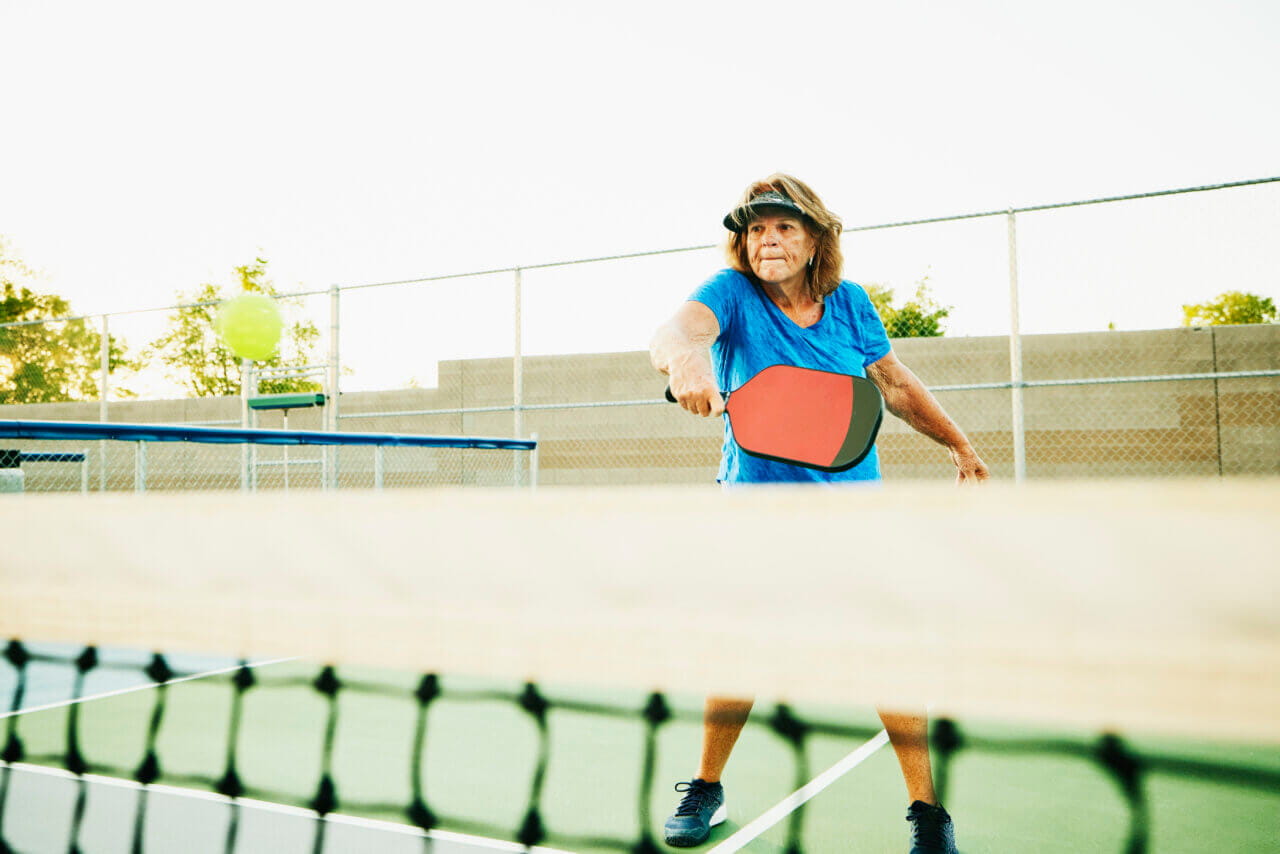Tips for Avoiding Ankle Sprains on the Pickleball Court
.jpg?rev=f1e765eb2ef74944a692a119462cfc9a)
Pickleball is a fun, fast-paced game. While the focus is often on the shots players make, their footwork is equally essential.
As a pickler, you’ve got to move around the court quickly and get your body into the right position to strike the ball effectively. The rapid starts, stops, pivots, and changes of direction help you make better returns, but they also increase your risk of an ankle sprain.
These injuries are painful and can keep you off the court for several days or even weeks, depending on the severity. Fortunately, there are several actions you can take to reduce your ankle sprain risk while playing pickleball. This article lists and explains them.
How to Protect Your Ankles While Playing Pickleball
To stay on the pickleball court and off the sideline nursing a sprained ankle, do the following:
Ease Into the Game
Your lower extremities, including your ankles, must absorb significant energy in a pickleball match. If you’re new to the sport, you should ease into it, playing fewer games per outing and leaving more time between outings. A slow ramp-up of your play gives the muscles, tendons, and ligaments that support your ankles time to strengthen and adapt to the stress placed on them. This can make you less likely to sprain an ankle and also reduce your risk of other injuries, like an Achilles tendon tear.
Learn and Use Proper Footwork
Another advantage of easing into the sport is that it gives you time to learn proper footwork. Moving smoothly around the court is good for your play and for injury prevention.
Wear Appropriate Shoes
Choose footwear designed for court sports. These shoes have good lateral (side-to-side) support that can help keep you from “rolling” an ankle. Shoes designed for other activities, like running, often don’t have enough lateral support or the tread needed to provide good traction.
Stretch Before and After Play
Stretching before pickleball is essential. Dynamic actions like walking lunges, heel and toe raises, and ankle rolls are especially helpful. They stretch your muscles, tendons, and ligaments, preparing them for action while increasing your heart and breathing rates a bit.
Let Injuries Heal Thoroughly
Whether you experience a significant ankle sprain or just “tweak” an ankle, you should let the injury heal completely before playing again. Patience can be hard to come by when you’re eager to get back on the court, but returning to play too soon increases your risk of an even more severe sprain.
Consider a Brace
If you’re prone to sprained ankles, talk with your healthcare provider about whether wearing an ankle brace would be helpful. A brace can help support your ankle and may reduce your injury risk.
Add Variety to Your Workout Regimen
Participating in multiple activities helps increase your strength and flexibility in ways that only playing pickleball can’t, which helps protect you from injuries. Try incorporating things like yoga, biking, and swimming into your workout routine.
Listen to Your Body
This is advice you’ll hear a lot in the pickleball community. The game is so enjoyable that people often try to play more games at a higher intensity than their bodies can handle. Unfortunately, that approach makes it much more likely that you’ll get hurt and be sidelined.
Talk With Your Provider About Pickleball and Sprained Ankles
Before hitting the pickleball court, talk with your healthcare provider about whether you’re healthy enough to play. If you are, they can provide tips for avoiding injuries, including painful ankle sprains.
Take our Knee and Hip Joint Pain Assessment, call 1.844.6BAPTIST, or visit our provider directory to find a Baptist Health orthopedic care provider today.
Next Steps and Helpful Resources
Learn About Orthopedic Care at Baptist Health
Preventing Overuse Injuries in Pickleball
Preventing and Treating Pickleball-Related Knee Pain
Understanding Pickleball-Related Shoulder Injuries and Treatment Options



